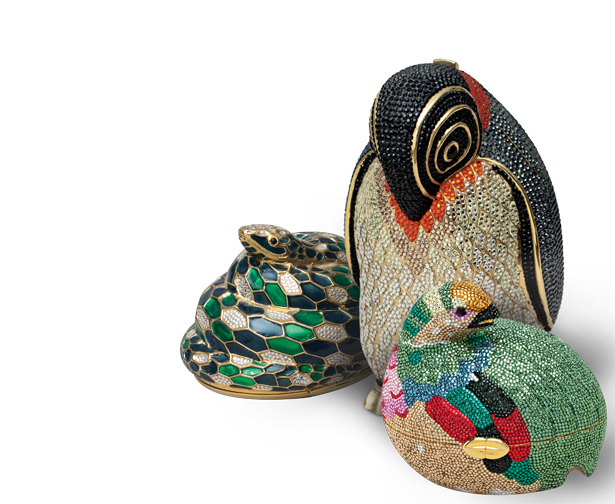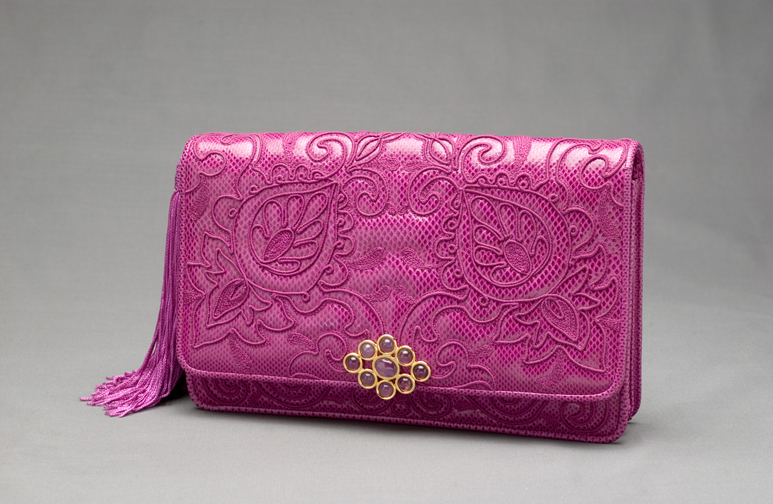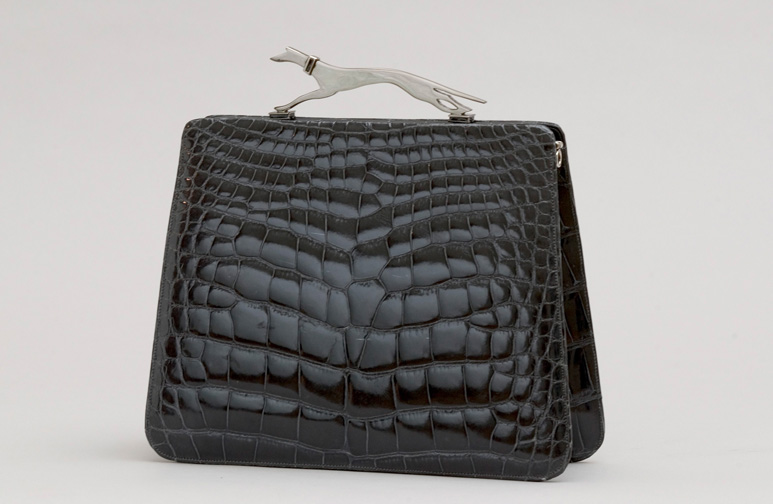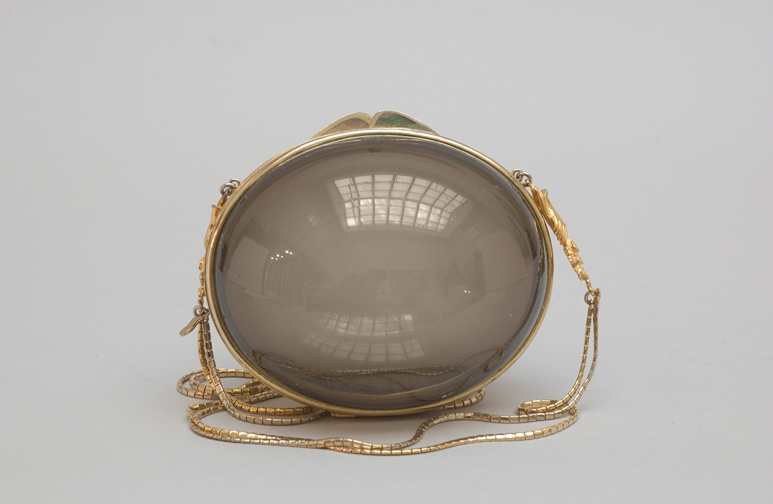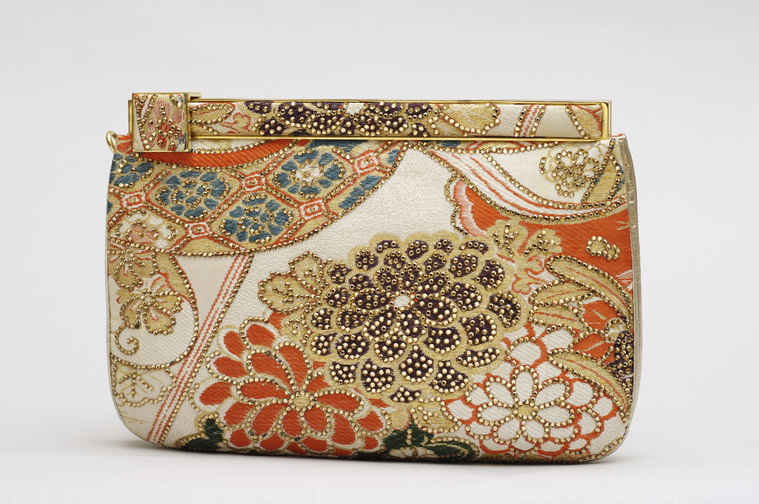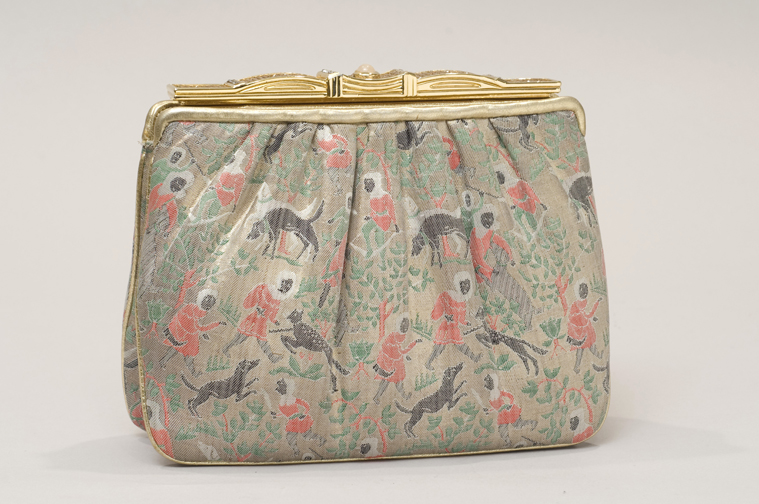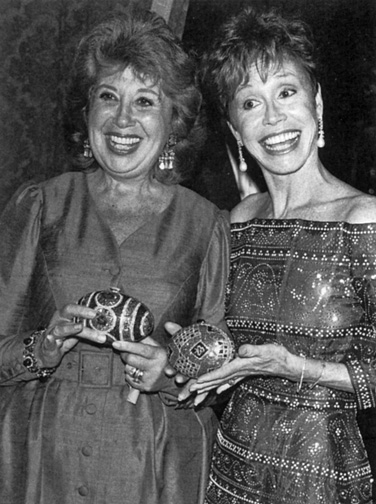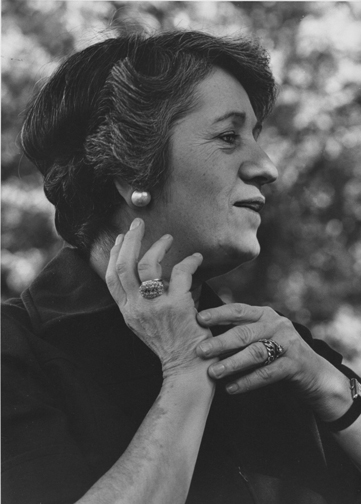A greyhound clasp tops a stately bag fashioned out of alligator.
It’s a singular, sleek and decidedly luxurious statement – and yet another design that could only come from the imagination of Judith Leiber.
After all, her handbag creations have included countless odes, often sparkly, to dogs and cats, pigs and fish, tigers and frogs, birds, horses, dolphins, seals, peacocks and most every other member of the animal kingdom.
And this month, the noted designer – who spent some 65 years in the fashion and accessories industry – is celebrated in a “maker” exhibition at the Museum of Arts and Design.
“Judith Leiber: Crafting a New York Story” opens April 4 at the Manhattan museum, paying homage to Leiber as craftswoman, designer and businesswoman.
The show has been curated to trace her rise from a handbag apprentice in pre-World War II Budapest through her becoming an industry icon with bags that became favorites of first ladies and those who walk the red carpet. So often recognized for her minaudières, Leiber will also be celebrated through broader explorations of her craftsmanship, influences and outlook.
The exhibition will include selections that span the history of Judith Leiber Handbags, founded in 1963 in New York, and continue through 2004, when she designed her last bag.
The show is curated by MAD’s Assistant Curator Samantha De Tillio, with the support of Curatorial Assistant and Project Manager Angelik Vizcarrondo-Laboy.
De Tillio answers a few questions for WAG in advance of the show’s opening:
MAD has such a strong tradition of spotlighting the makers and their processes. What drew the museum to Judith Leiber and her work?
“MAD is a very artist-focused institution and we are committed to continuously telling their stories. Judith fits very well within the greater mission of the institution and she and her work are particularly suited for an exhibition here. When considering the best of the handbag industry in the last century, certainly Judith’s name would be included. Her training in Europe generally, and Budapest, Hungary, specifically provided her with a skill set that surpassed those of United States-trained industry professionals. (In Budapest the craft was learned from apprenticeship through mastery and an individual – Judith in this case – would learn the skills to make a handbag from design to completion, while in the U.S. the industry used skill division and craftspeople learned one particular part of the trade and continued to do that one piece, collaborating with many craftspeople to make one handbag). This ability to create a handbag from start to finish was combined with Judith’s own commitment to using the highest quality of materials and hand-craftsmanship throughout the course of her career, resulting in handbags of a quality that surpassed any others made at the time.
Judith’s personal story and the showing of her work is also quite timely. 1) The Museum is hosting a full spring season entitled ‘The Art and Craft of Getting Dressed,’ a series of three exhibitions this spring that embrace craftsmanship, cultural commentary and critical thinking in fashion practices – from the couture to the conceptual – across multiple generations. 2) In this current state of politicization it’s important – being a New York City institution – to celebrate the creative and economic contributions of the immigrant community, of which Judith is a part.”
Did you have the chance to work closely with Judith Leiber in designing the show? If so, what was that like?
“Both Judith and her husband, Gerson, were incredibly welcoming of me during multiple research trips to the Leiber Collection, accommodating an extensive interview, and answering questions via email through their collections manager throughout the curatorial process. Otherwise, Judith took a very hands-off approach, while I designed the show in tandem with our in-house exhibitions designer Hendrik Gerrits, who is also our director of exhibitions.”
How did you select what to feature – and does the final show differ in any way from the original concept?
“One of my main objectives with the exhibition was to show the great breadth and variety of Judith’s work. She is best known for her Swarovski-encrusted minaudières, but the variety of the designs she made over the course of her career (over 3,500 designs just during the lifetime of her company Judith Leiber Handbags) is impressive. The work includes leather day bags, intricate Art Deco hardware, the use of textiles from around the world, materials as varied as Lucite and carved ebony and, of course, her famed minaudières.
“I decided to take a biographical approach to the exhibition, using Judith – the designer, craftswoman, and businesswoman/entrepreneur – as the central column out from which all the other exhibition themes spiral. She as a person and her story infiltrates each of the gallery spaces, while we’re exploring themes such as the history of the handbag, the gendered nature of handbag use, the minaudière as carried by first ladies, influence of the arts, etc.
“Finally the handbags themselves were organized by formal properties within these themes so there is a grouping of handbags influenced by artists such as Sonia Delaunay, Piet Mondrian, Charles Rennie Mackintosh, etc., and a grouping of handbags created from international textiles, among others.
“My concept stayed consistent throughout the planning process.”
Touching on our issue’s animal theme, can you comment on how/why Leiber included animals and animal-themed prints in her work?
“I think one of the influences Judith has had on the handbag industry is the allowance for humor and whimsy to infiltrate her designs. As her minaudières became more popular and well-known, she expanded the range of designs she created to include flora and fauna, books, a range of Chinese and Japanese influences (the Leibers collect Chinese porcelains and Japanese woodblock prints), works that reference the performing arts and bags made for specific individuals that reference their own interests.
“Her animal bags are part of this grouping. When speaking with Judith about her range of influences, she said she gets her ideas from everywhere (her husband is an avid gardener, thus sparking her fruit and vegetable bags), and took more of a why not approach to creating such whimsical animal designs.
“Additionally, she has created handbags in the image of first ladies’ pets, such as Hillary Clinton’s ‘Socks’ bag and Barbara Bush’s ‘Millie’ bag, both of which will be in the show.”
Beyond the bags’ “real” use – practicality is not really the first thing that comes to mind when you see the designs — what does a Judith Leiber bag signify?
“I think this question really speaks to the infamous stature of her minaudières, which are only a piece of the Leiber story. Her wide variety of leather and textile handbags are very practical and of a size we might consider more ‘useful.’
“Her minaudières, on the other hand, are diminutive in size and Judith has been quoted saying they are large enough to hold all a woman needs – a lipstick and one hundred dollar bill. I’m paraphrasing here. There’s no doubt that a Leiber minaudière – worn by celebrities on the red carpet, and first ladies to the inaugurations – have consistently acted as a status symbol, but more interesting is their inhabitance of both a handbag and jewelry status. The extensive variety of designs, elaborate surface treatment and use of crystal rhinestones, and the way they are carried in the hand all lend these handbags to stand in for jewelry and a type of body adornment. In fact, Judith once wore one of her handbags as a neckpiece.”
Who do you think the exhibition will appeal to – and why?
“In making this exhibition I really wanted it to appeal to a wide variety of audiences and have numerous entry points. At its core the exhibition tells the story of a strong woman who against many odds, including the Second World War, created a business where she is respected and internationally known…. I think people who already know her work will be interested in the show, and, as I stated…I hope they will be able to take away something new from seeing the great variety of her work. Visitors interested in fashion certainly will have something to take away. The exhibition is one of three exhibitions opening in our spring season devoted to issues of fashion.
“I think the exhibition will appeal to others who are attracted to Judith’s story as an immigrant entrepreneur. Particularly during these increasingly politicized times, it’s important to remember the importance of immigrants and immigrant businesses to the fabric of New York.”
Finally, can you share your thoughts on Judith Leiber’s enduring importance? On a personal note, can you also share what impressions might stay with you from this curatorial experience?
“For all the reasons I’ve stated… I think it’s important that Judith’s contribution to the field be recorded and remembered. She broke the mold of what a handbag could be in terms of form and material, but also personality. You can see the longevity of her influence in any handbags that are decorated with rhinestones.
“On a personal note, working with artists and learning their stories is something I enjoy very much. I think there is something in particular to learn when working with our elders such as in this experience. I don’t think I know exactly what will stay with me yet. The unpacking process will continue on after the exhibition opens and I have a chance to reflect on the experience and the results.”
“Judith Leiber: Crafting a New York Story” opens April 4 and continues through Aug. 6 at the Museum of Arts and Design, at 2 Columbus Circle in Manhattan. For more, visit madmuseum.org.

